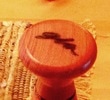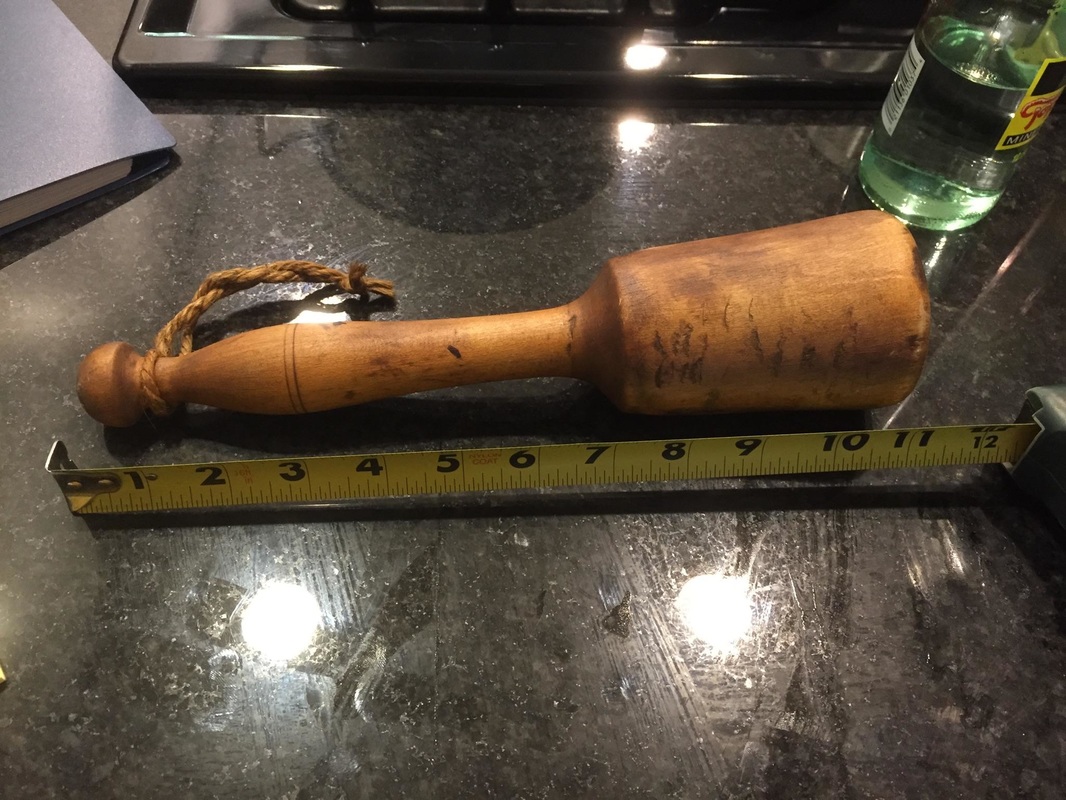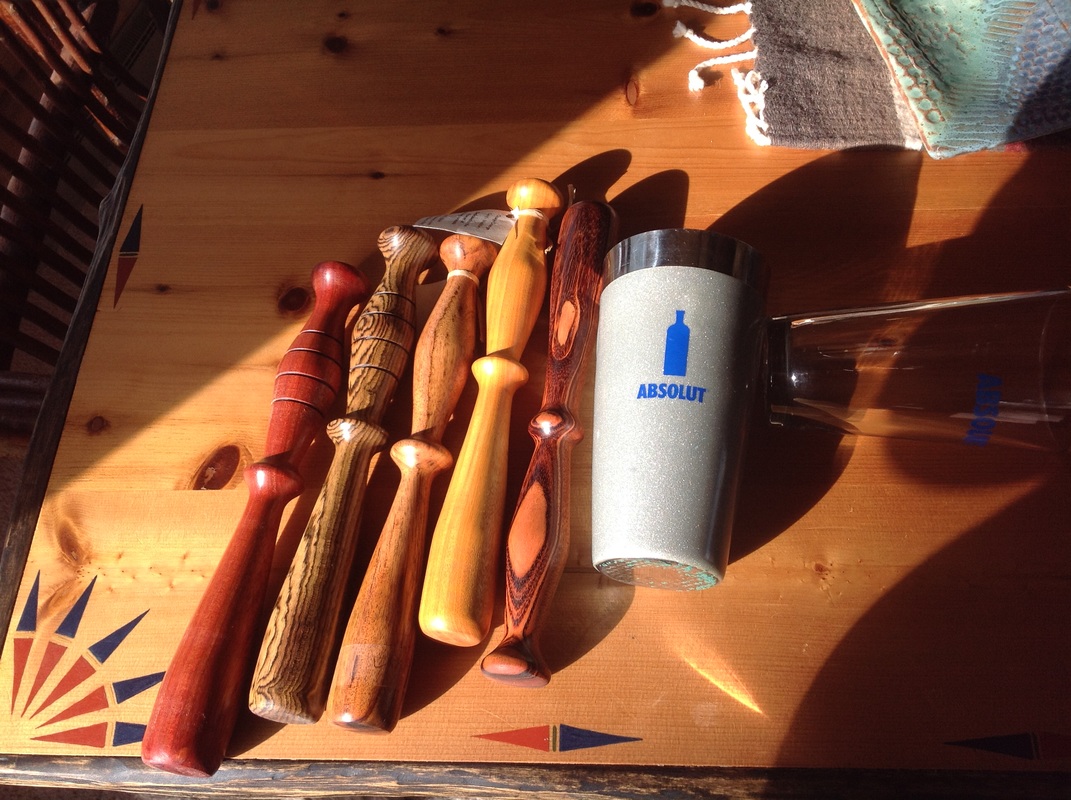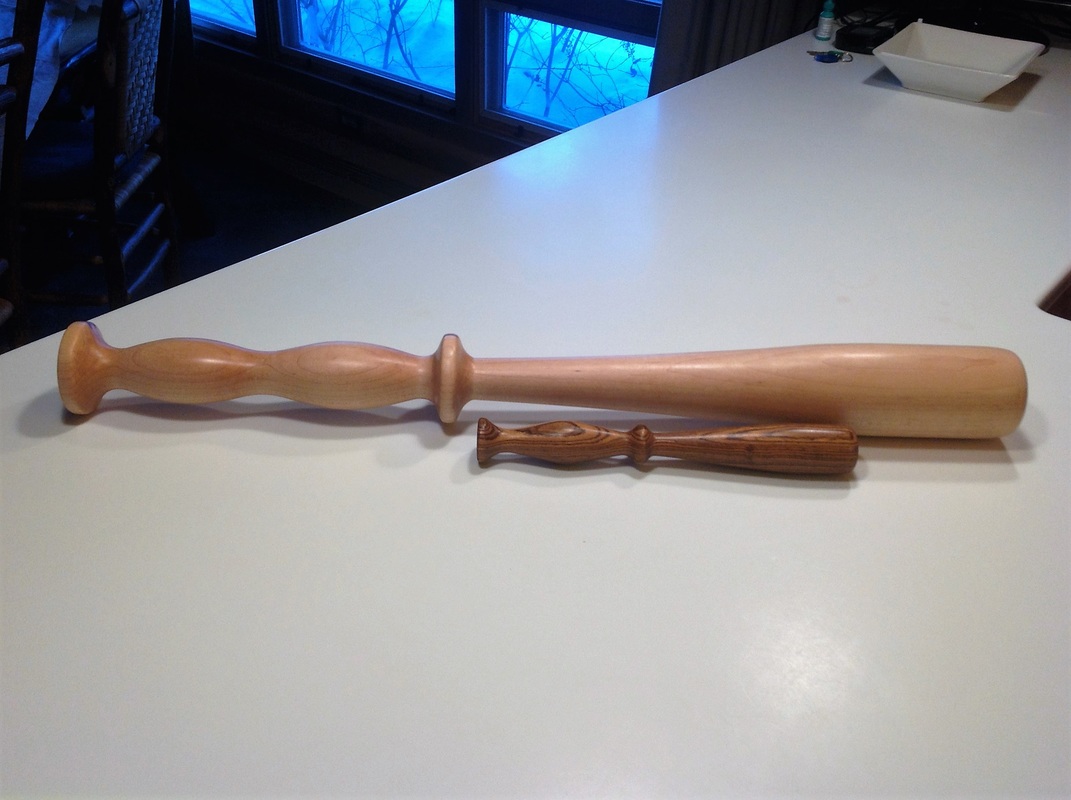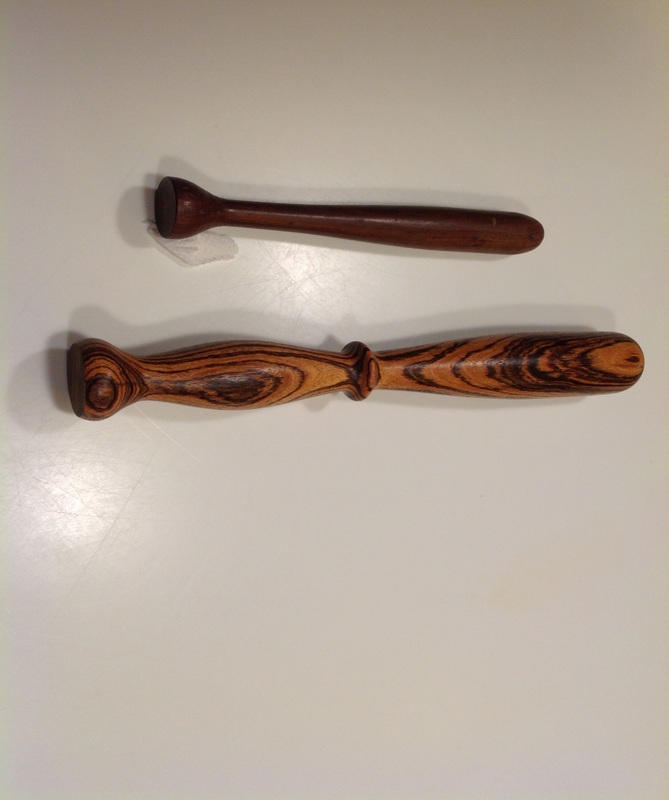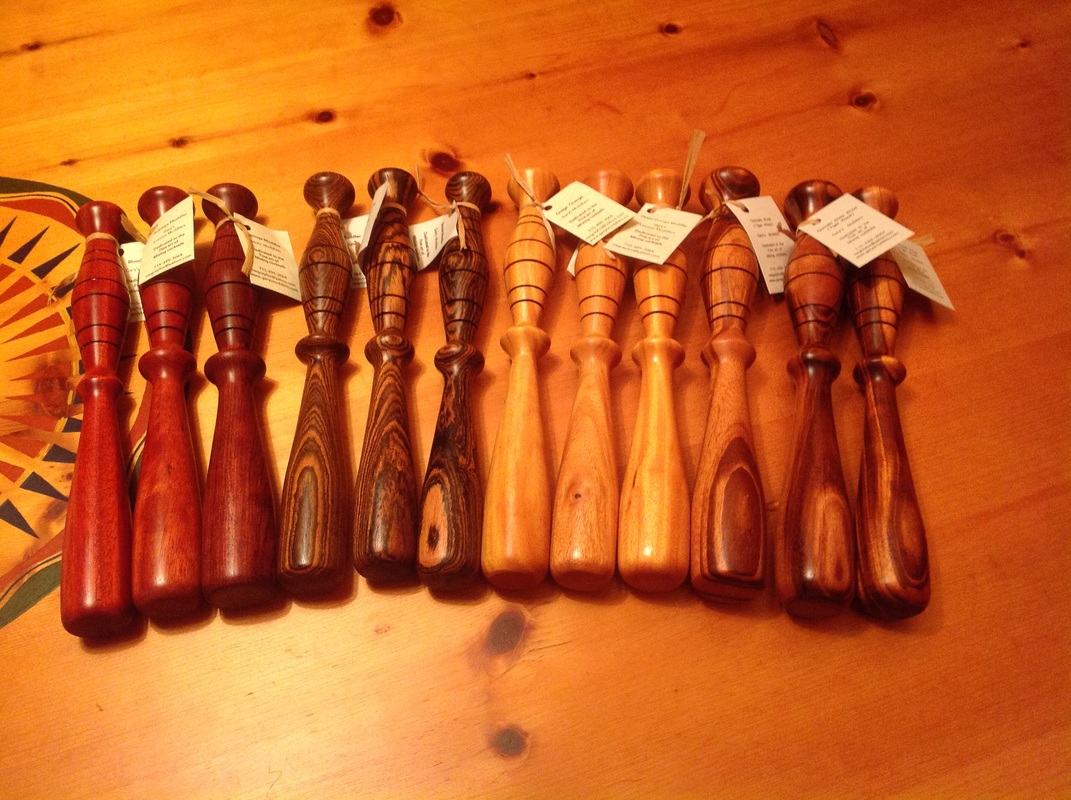Oh "I love these custom hardwood bar muddlers made in the Northwoods of Wisconsin by Gary Appel—they're both durable and beautiful."--Ivy Mix, co-founder, Speed Rack, NYC
"I've used these muddlers at barrelhouse since day one and never had to buy new ones. Gary even custom fit them to be draft handles and not one has split, broke nor splintered. They are going on 5 years strong." Stephen Patrick Cole,
Why a Wooden Muddler?
I truly appreciate the more than century old of craft of mixing cocktails. That's why I make my muddlers from special varieties of wood rather than plastic or steel or other "cold" materials. Along the way in my muddler making I learned a lot from my son Todd Appel, and his more than 20 years as a cocktail craftsman. Together we refined the muddler design, tested different woods for beauty and hardness and explored variout finishes for the muddlers. We are proud of what we eventually came up with.
I now make muddlers for serious mixologists who enjoy making cocktails for their taste but also their looks - the beauty of the bar-ware - and the craftsmanship of the bartender. A key part of that is the beauty and shape of the muddlers used and to me that means the muddler is made of wood.
But, not any wood. The wood has to be exceptionally hard and tough to take the punishment of making hundreds of cocktails. It has to be beautiful, with colors, grain patterns and contrasts in the shades and hue of wood. It has to have a tight grain so it polishes well and will take up a finish that protects from alcohol, water and stains. It has to be safe to use in making drinks.
After testing dozens of wood varieties I have focused on five or six - Bocote, Tiger wood ( Goncalo Alves), Osage Orange (from Argentina), Bloodwood, and Chechen (Caribbean Rosewood). I add others upon occasion to keep making them fun - such as Bolivian Rosewood and most recently a really interesting ancient wood - Mesquite. Only the mesquite comes from outside a relatively narrow geographic band around the equator.
I now make muddlers for serious mixologists who enjoy making cocktails for their taste but also their looks - the beauty of the bar-ware - and the craftsmanship of the bartender. A key part of that is the beauty and shape of the muddlers used and to me that means the muddler is made of wood.
But, not any wood. The wood has to be exceptionally hard and tough to take the punishment of making hundreds of cocktails. It has to be beautiful, with colors, grain patterns and contrasts in the shades and hue of wood. It has to have a tight grain so it polishes well and will take up a finish that protects from alcohol, water and stains. It has to be safe to use in making drinks.
After testing dozens of wood varieties I have focused on five or six - Bocote, Tiger wood ( Goncalo Alves), Osage Orange (from Argentina), Bloodwood, and Chechen (Caribbean Rosewood). I add others upon occasion to keep making them fun - such as Bolivian Rosewood and most recently a really interesting ancient wood - Mesquite. Only the mesquite comes from outside a relatively narrow geographic band around the equator.
The Muddler Wood I Use
There is no commercially available wood from North America that I meets my muddler hardmess requirements except mesquite. That includes Oak, Ash, Maple and others often thought of as very hard.
Hardness or wood is measured by the internal Janka scale. All of our wood is 2000, or more on that scale. That means is takes at least 2000 lbs of pressure to push a small steel ball half way into the wood. In contrast, the hardest commercially available wood from North America, Hickory and Pecan is rated 1820 on the Janka scale. Black Walnut, which is among the most beautiful wood in the world, is only 1020 on the hardness scale.
Muddler Design
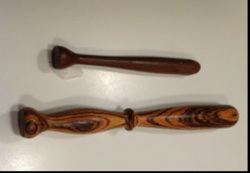
Much of the beauty of a muddler comes from the wood itself, but the shape of a beautiful muddler must bring out that beauty. I hope you agree that my muddlers have done this.
As a student of the bartender craft I study old and new muddler designs. The oldest muddler I have in my collection was made in the 1700s ( top muddler in the photo). Notice the smooth simple shape and the relatively small size. Its simple design is as beautiful and functional today as it was when it was made. This one is made from Cherry Wood (soft) for use in stirring punches in shallow cups.
By contrast, the most common design I use is shown by the lower muddler made from Bocote wood. The shape was developed to highlight and showoff the beautiful colors and grain contrast.
Gary's muddlers are designed to be functional as well as beautiful. They are 11.5 to 12.0 inches long and about 1.25 inches in diameter. This length allows comfortable muddling in shallow glasses (e.g. for Old Fashions) or in taller cocktail shakers (e.g. for Mojitos) - see picture below.
As a student of the bartender craft I study old and new muddler designs. The oldest muddler I have in my collection was made in the 1700s ( top muddler in the photo). Notice the smooth simple shape and the relatively small size. Its simple design is as beautiful and functional today as it was when it was made. This one is made from Cherry Wood (soft) for use in stirring punches in shallow cups.
By contrast, the most common design I use is shown by the lower muddler made from Bocote wood. The shape was developed to highlight and showoff the beautiful colors and grain contrast.
Gary's muddlers are designed to be functional as well as beautiful. They are 11.5 to 12.0 inches long and about 1.25 inches in diameter. This length allows comfortable muddling in shallow glasses (e.g. for Old Fashions) or in taller cocktail shakers (e.g. for Mojitos) - see picture below.
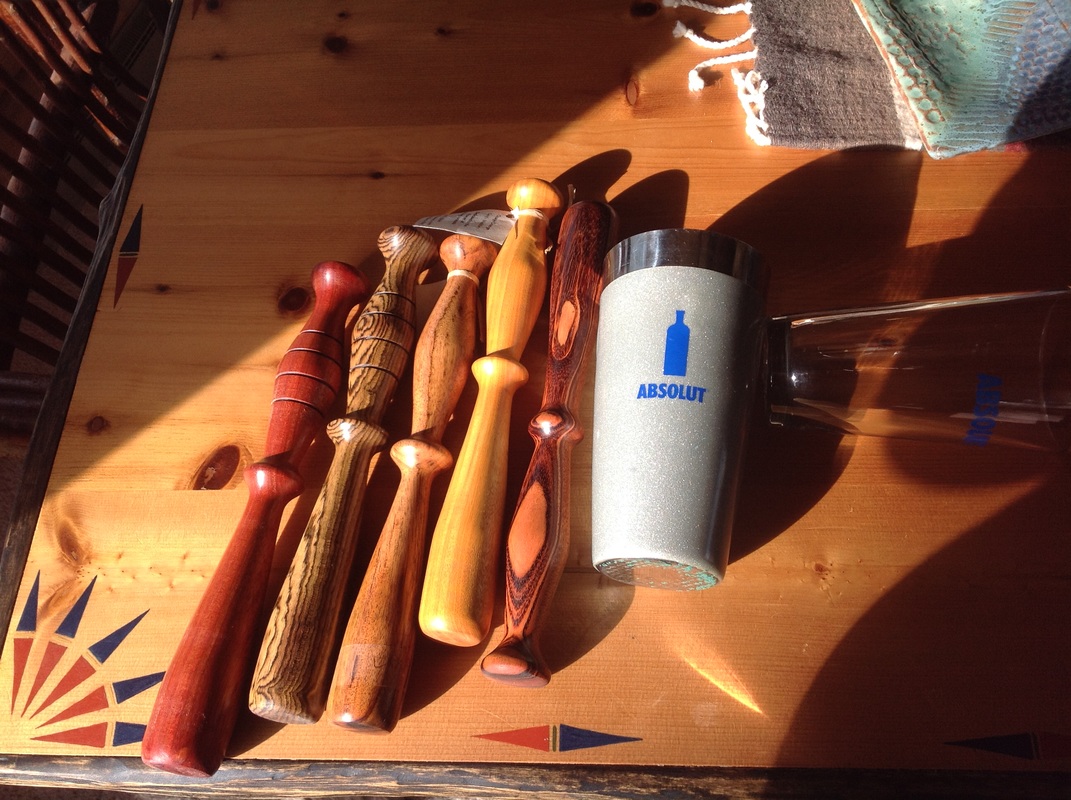
The colors and patterns within each specie of wood are often dramatically different -- for example, lay two muddlers made from Bocote along side each other and you might think they were made from entirely different species of wood. So, I offer my customers the option of emailing me with their muddler wood preference so I can send pictures back of the specific muddler they might want. Reach me at nwgreyfox@yahoo.com.
Uniqueness of Each Piece of Wood Used
Cost
Most of our muddlers are $70 with shipping free.
Muddler Finish
My muddler Velvet Oil finish is a food safe blend of soy and linseed oil resins that is formulated to penetrate and actually harden the wood itself. It brings out the beautiful color and features of the wood. The mixture hardens when exposed to air making a finish that resists alcohol and many common stains and stands up to the hard use of professional mixologists. It will not wrinkle, peel or crack. It is far better than lacquer or shellac.
I have been told that Velvet Oil was developed by a highschool physics teacher in north central Wisconsin over 25 years ago. It is the only finish I have ever used. As far as I know, my cocktail muddlers are the only ones using Velvet Oil.
